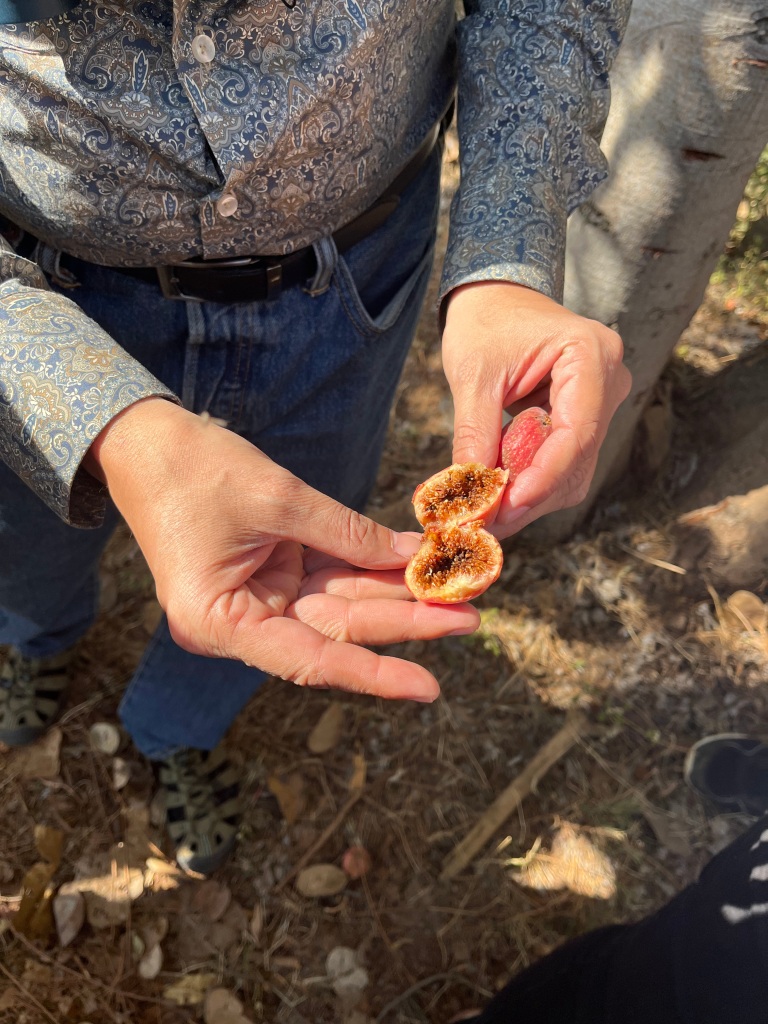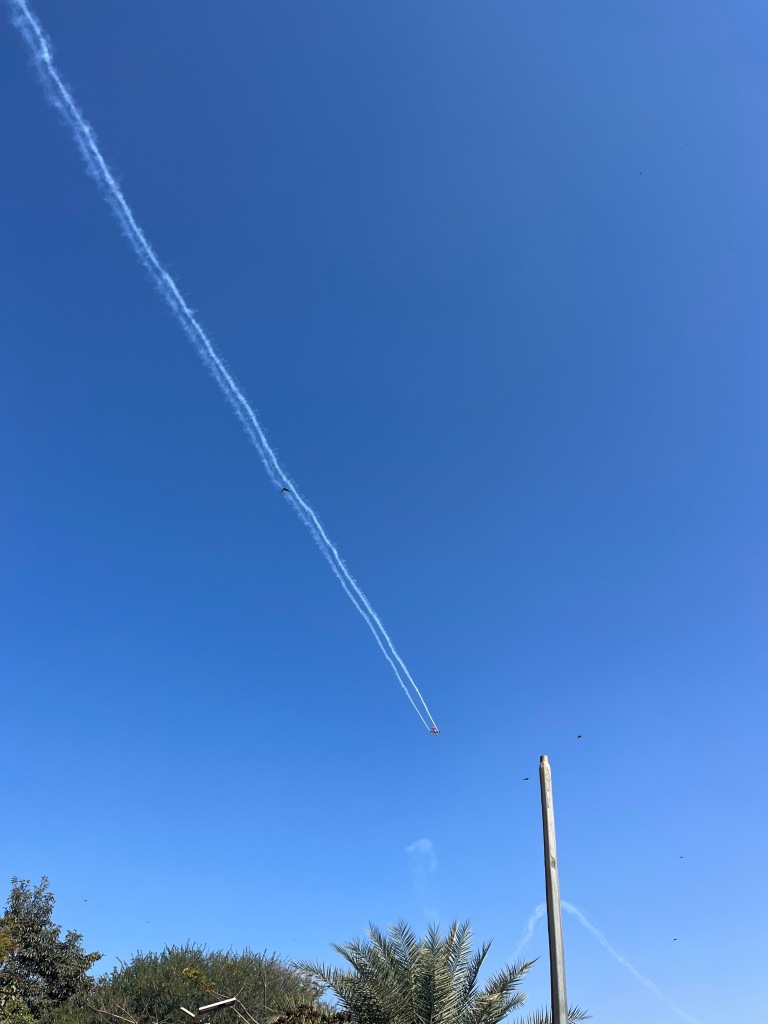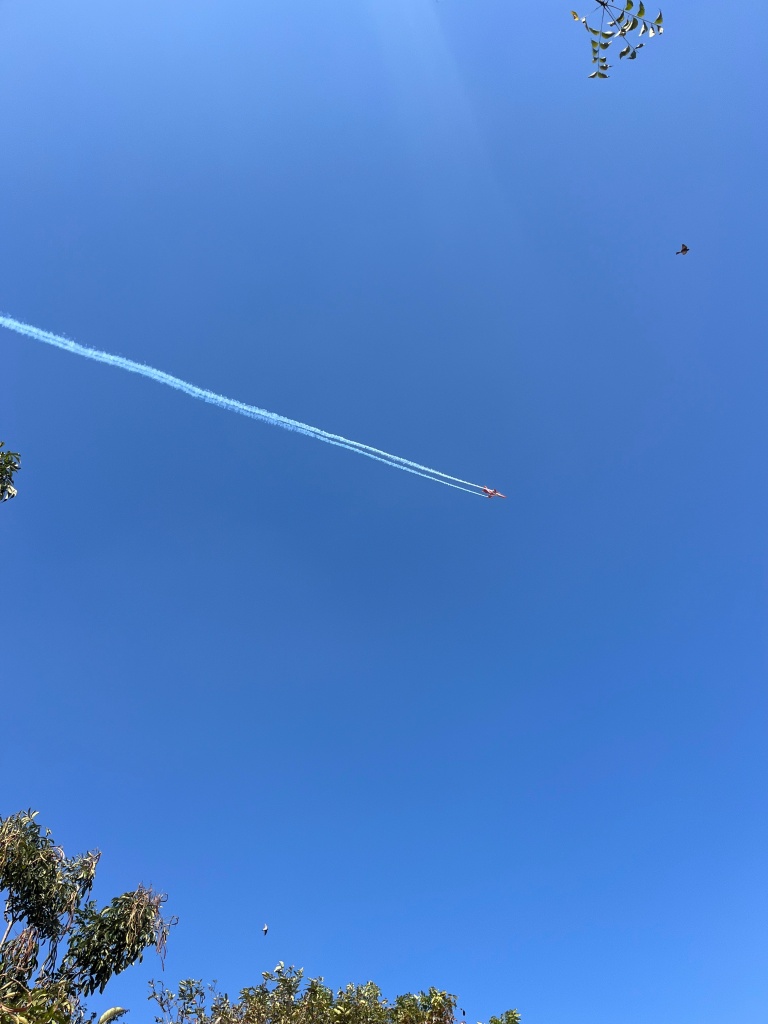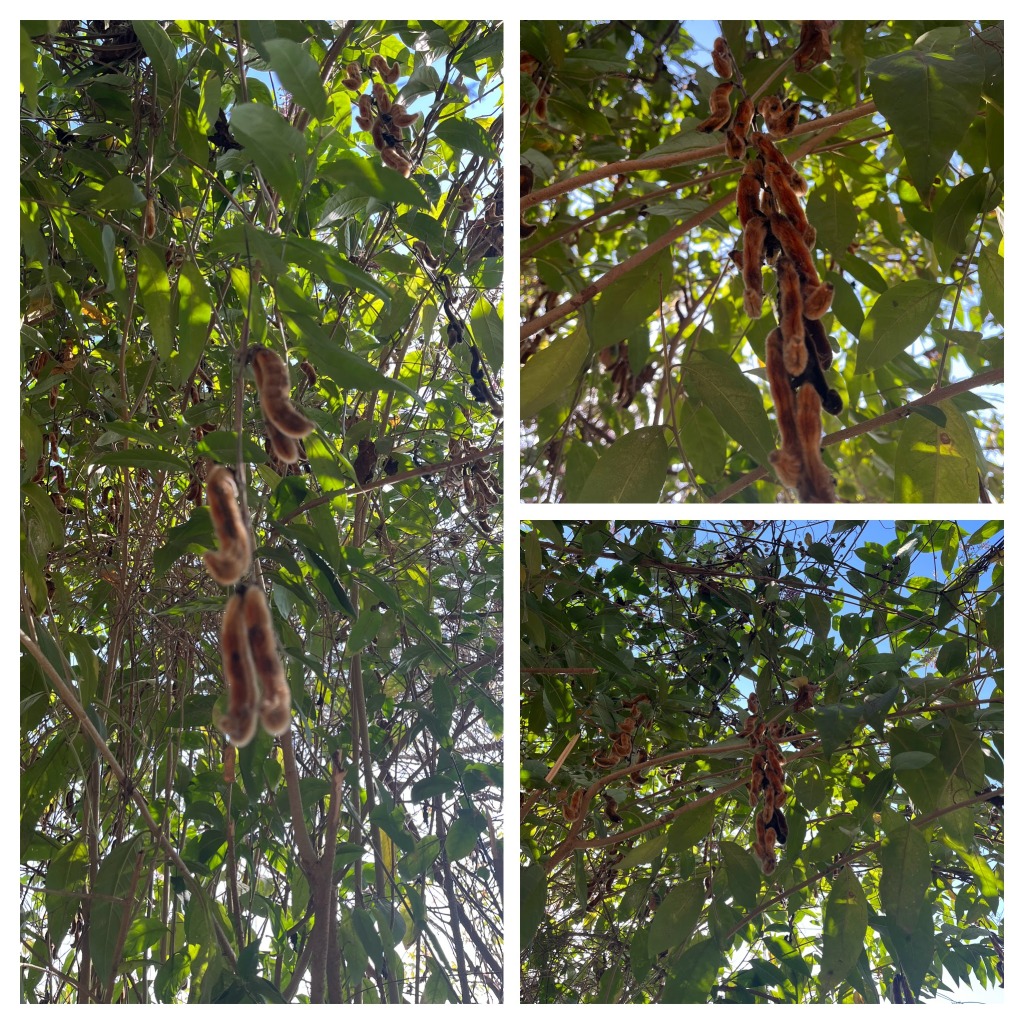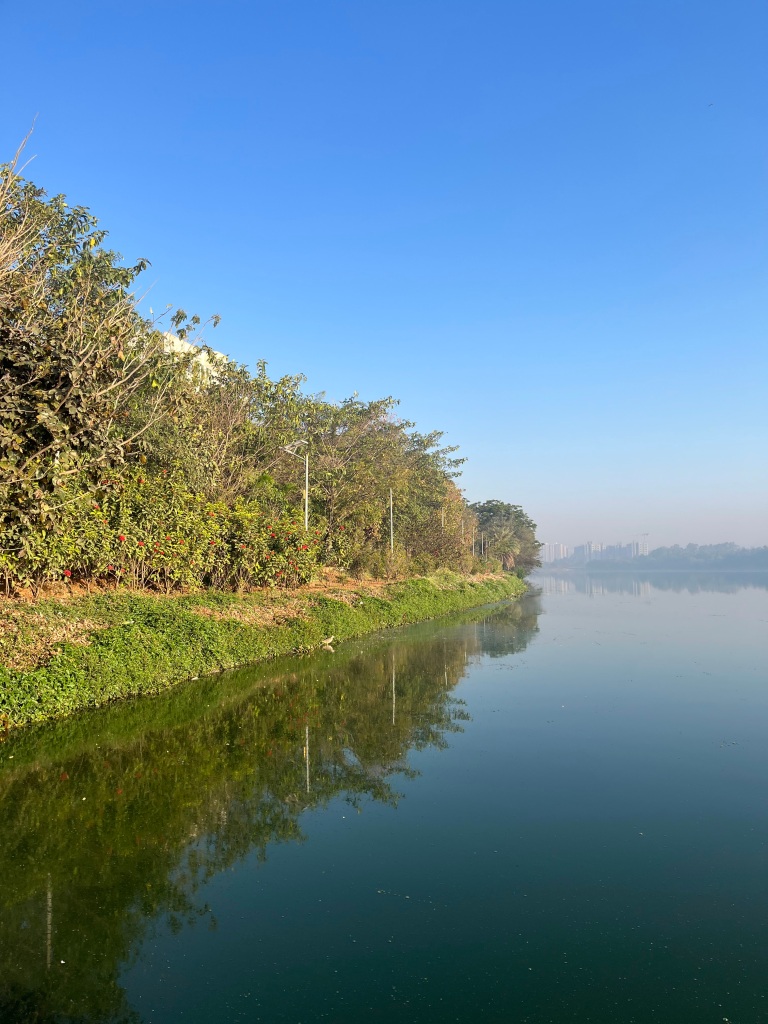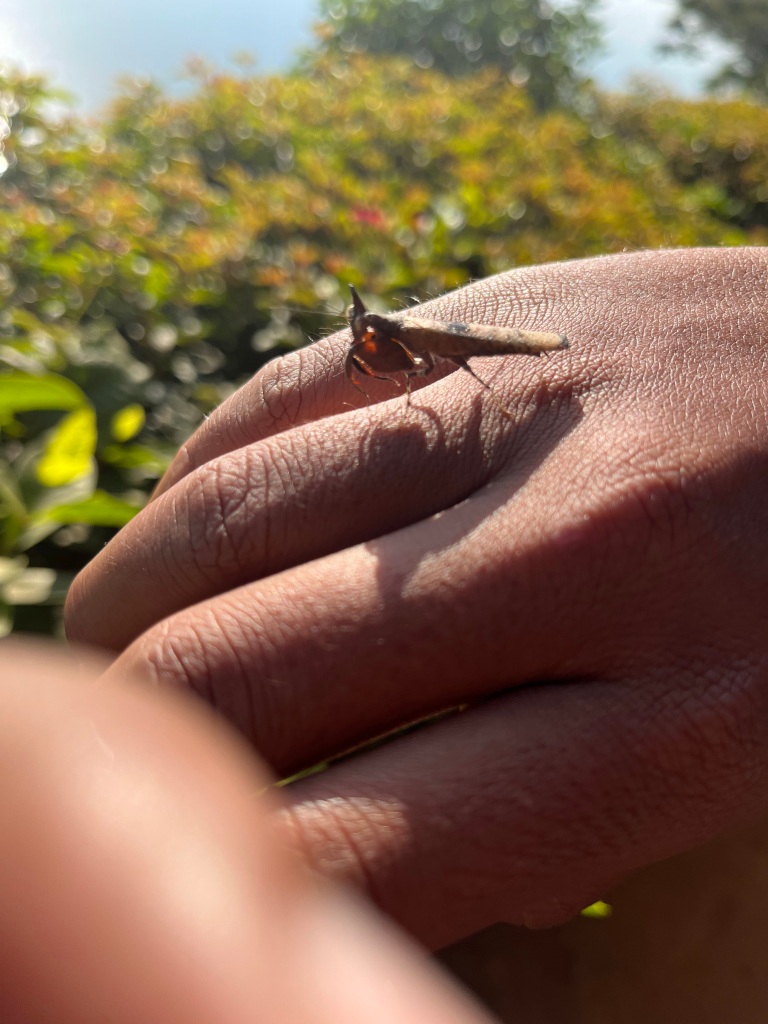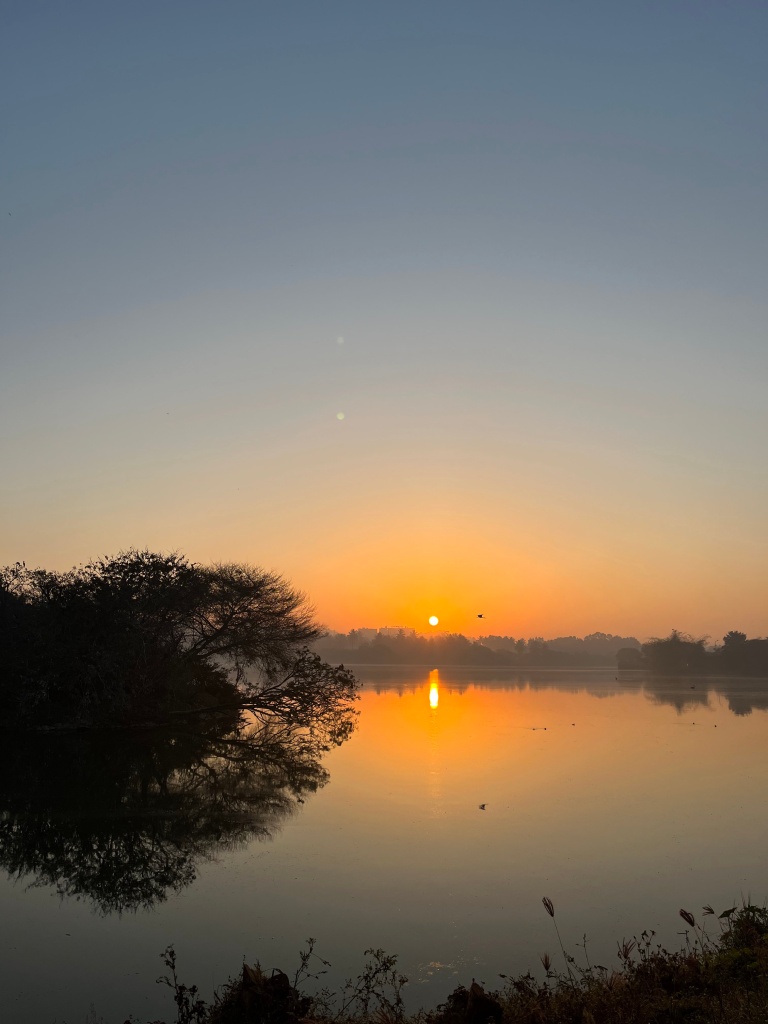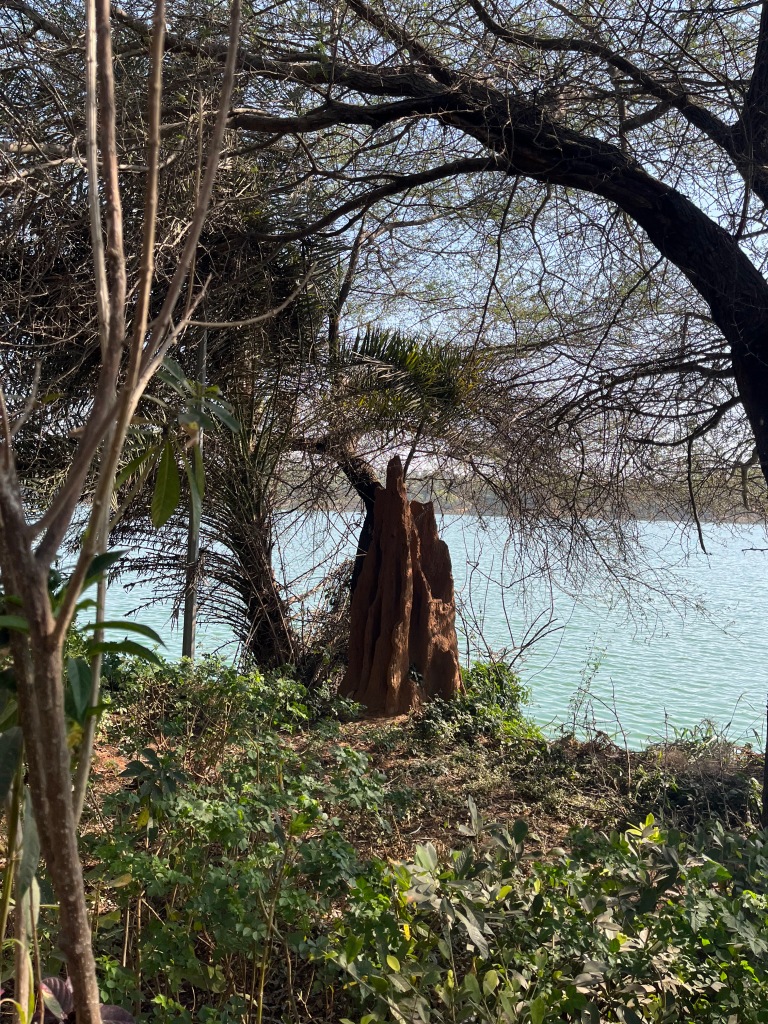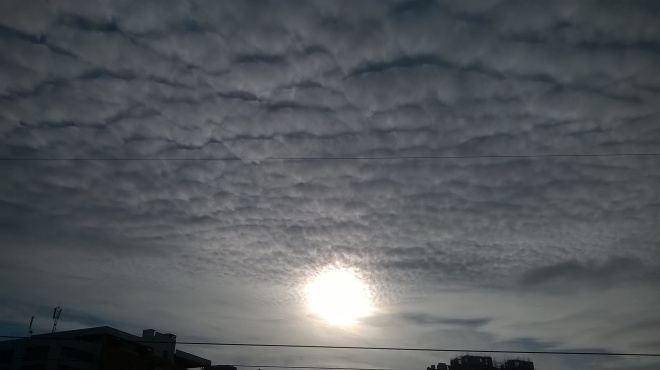It was April month, the summer of 2022. Even though scorching heat was unbearable, I was walking with my friends on open terrain far away from small village situated in Konkan region of Maharashtra. Terrain was kind of barren land with sparse small trees and bushes. But my friends spotted birds there and they started talking about it. The birds which I had never seen before or never heard their sounds before. Also, the names of those birds sounded quite funny in local language, and some were apt too. That was the time when I realized, yet again, there is so much in the Nature which cannot be observed or experienced by living in city life, in cement concrete jungle!
Far away from Konkan and state of Maharashtra, this year February, of course the summer has not started yet, but the mornings are not chilly either. It was still dark when I started early morning. The glass walled big IT park buildings of Bengaluru were still shining with lights. The road & metro train construction dust on Outer Ring Road was clearly visible to eyes under streetlights. No one talks about covid anymore, but the masks are not gone yet. Quite useful to save my day from sneezing. So, I reached Jakkur lake just before sunrise to take a walk with people of science!
As soon as I enter the lake premises, I watched the Sun rise. The birds with large wings had my attention, naturally. The walk started and I got the names, Spot-Billed Pelican and Painted Stork were on top of trees grown on islands inside the lake. Just when we were told that FEB and MAR months are nesting season of Painted Stork, through binocular, I actually observed one of the Painted Stork flying with a stick in its beak. When I asked about why/how there are islands in lakes? It’s one of the commonalities I see across the lakes in Bengaluru. (Yes, there so many Lakes in Bangalore – Wikipedia) The answer by Dr. Abhijeet Bayani raised eyebrows of many the participants. He explained that islands (natural & man made both) are integral part of the eco system of lakes and it divides how the different species of birds live in harmony in different parts of lake. Pelicans and Storks are big birds, they build nest on island. They can fly fairly high and long distance and hunt fishes around islands and sometimes even across the lake. However, the birds like Pond Herons live on the shoreline. Pond Herons is small in size and usually feed on insects in the water, doesn’t usually live on the islands. In this eco system of lakes, there are some birds who find their feeds during morning times, some during afternoon and some during evening times. Dr. Bayani also had great knowledge of spiders. He spoke passionately about the fashion in which spiders lay out webs to catch insects on tress/bushes in horizontal, vertical, the tent type and the one on the grounds like very thin sheet of cotton. The story of how social spiders grow in a bunch on trees was fascinating too.
Scientist Prof. Krushnamegh Kunte PhD, told us how Brahminy Kite and Black Kite birds use hot air currents to fly very high in sky. They observe the fish coming on the water surface to dive in to catch them. He also explained what’s the meaning of the saying “Harrier or Coot” when we spotted Eurasian Coots swimming the water. As we walk around the lake, he spoke about lots of trees. He introduced us to few nasty trees and asked us to stay away from them! The leaves of one particular tree makes our skin itchy, the fruit of another tree (Mucuna pruriens) has hair like protective layer, if comes in contact with our skin, it itches a lot. If you get a chance, hear the story of Figs from him (I am not able recall it with those scientific terms). Too bad, none of us participants joined him to taste fresh Fig fruit😊Other than all this, for me, it was surprising and truly awesome to meet Prof. Kunte in-person. I had read his book very long back, during my college times. I should find it again and re-read 😊 If you are interested about his book – English translation if chapter1. Amazon link. (Okay, this is not promotional post. Just sharing because the book has fascinating stories of Elephants, Bisons and wildlife experiences).
The other volunteers/students taking walk with us were amazing too, (Viraj) PhD student talked about Praying Mantis by actually showing the insect which landed on his hand. He also informed all participants about how as a citizen we can individually contribute to scientific observations of butterflies in Bengaluru. Another volunteer (forgot her name ☹) helped me to spot the White Cheeked Barbet bird.
And finally, before we finished our walk, we also spotted planes and helicopters performing at the Aero Show 2023.
So, when we finished the walk, every one of us sat down together to have bananas and cheese sandwich. Then every participant shared their experiences, anecdotes of personal connection with Nature. Listing a few below. Sorry, could not remember names and who said what ☹
- The fun of climbing and falling off the trees during childhood.
- Love for tea estates & farmlands.
- Visiting grandparents during summer vacations and enjoying nature, farms, fruits etc.
- Memories of school days, making natural colors for Holi festival.
- In day-to-day life trying hard to be plastic free in kitchen & home and being serious, spreading awareness about minimum usage of water.
- Spending few hours at night with Cobra snake while out in a forest.
- Taking care of baby bird fallen off nest.
- Observing the beehive in backyard, helping bees to grow to multiple places.
- Experiences of mountains & getting chased my monkeys.
- Power of flowing waters discharged from dam and facing death like situation.
- Entire town feeling fearful for days when earthquake hit different (nearby) city.
- A summer camp that inspired love for nature.
- The night sky in Himalayas.
Overall, the Jakkur lake visit triggered me in many ways. In good ways, of course. So, the Nature can be experienced in the middle of concrete jungle too. I just need to know little bit more about things I am surrounded by. The walk was enough to revive my amateurish interests in observing & respecting nature, reading and writing blogs.
